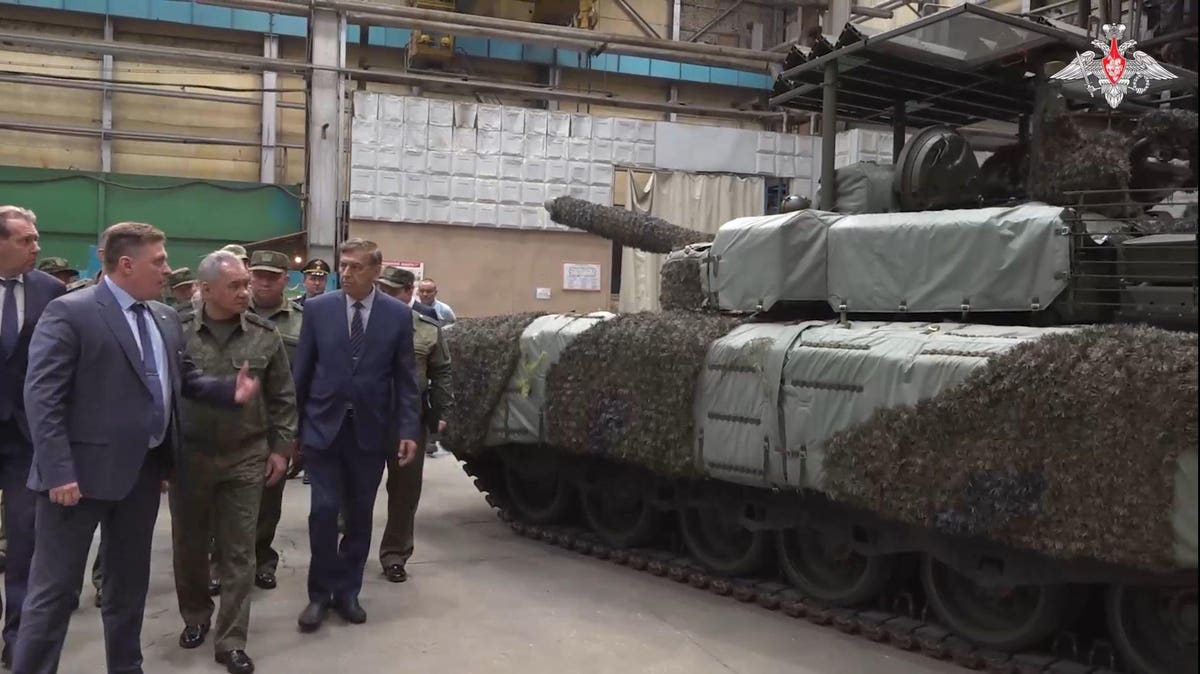It’s possible Russian industry has unclogged one of the major bottlenecks in its production of modern T-72B3, T-80BVM and T-90M tanks.
Their optics. Before Russian forces invaded Ukraine’s Crimean Peninsula back in 2014, Russia’s two active tank plants—Uralvagonzavod in Sverdlovsk Oblast and Omsktransmash in Siberia—sourced Catherine-FC thermal cameras, the core component of the Sosna-U gunner’s sight, from French firm Thales.
French sanctions on Russia barred the export of the thermal cameras. Which is why, as Russian tank losses exceeded a thousand last summer—roughly a year into Russia’s wider war on Ukraine—the Kremlin began pulling old T-62, T-72 and T-80 tanks out of long-term storage and fitting them with 1970s-vintage 1PN96MT-02 sights.
The Russians simply didn’t have enough Sosna-Us in stock to complete more than a few hundred of the latest T-72B3s, T-80BVMs and T-90Ms. They even created new, downgraded versions of these tanks that traded the unavailable Sosna-U for the available 1PN96MT-02.
That mattered because the result, for Russian battalions on the front lines, was a bunch of tanks that couldn’t fight very well at long distances, especially at night.
The Ukrainians at the same time were rearming with German-made Leopard 1A5 and Leopard 2A4/A6 tanks, Swedish-made CV90 infantry fighting vehicles and M-2 and Stryker IFVs from the United States—all combat vehicles with excellent long-range optics. For Kyiv’s troops, Russia’s industrial woes translated into an important battlefield advantage.
That advantage may be slipping. A video that circulated online this week depicts a trainload of T-80BVMs—30 or so—apparently leaving the Omsktransmash plant. The tanks feature the distinctive optics housings that point to the presence of Sosna-U sights.
Or not. Five years ago Russian industry launched a crash program to copy the Thales thermal camera, replacing French components with Russian ones. The resulting PNM-T sight looks like a Sosna-U sight, but might not have the same long-range, high fidelity and reliability that the Sosna-U is known for.
Omsktransmash either has begun installing PNM-Ts in new T-80BVMs—which aren’t actually new, per se, but rather are old T-80s that have undergone deep overhaul and upgrade—or Russia somehow has found a way around French sanctions, and has sourced a batch of Sosna-Us.
The latter isn’t impossible. Researchers have torn apart the remains of Russian drones and missiles recovered in Ukraine and found components produced by scores of smaller European and American firms that shouldn’t be able to ship products to Russia, but somehow have managed to do so.
In any event, it’s apparent Russian industry now is shipping new tanks with modern optics. Maybe the optics run out and the Russians again resort to shipping older tanks. Or maybe Russian industry permanently has solved its optics problem.
A permanent resolution of the optics crisis would be bad news for Ukraine. For now, at least. Once American-made M-1 tanks start arriving in Ukraine this fall, the battlefield balance of power again could shift. The M-1 has some of the best optics in the world.
Read the full article here





